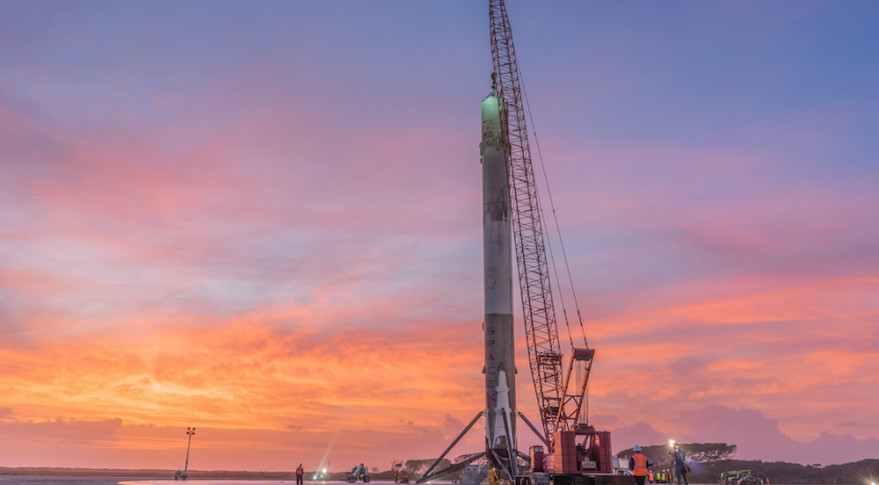Booming Space Launch Required Rethinking of Ranges, Experts Say

WASHINGTON — Most launch ranges aren't equipped to handle reusable rockets, space experts said, despite the technology being widely viewed as a key to reducing launch costs.
"The traditional range systems simply do not have sufficient capability to accommodate the emergence of multiple reusable flying elements," Jim Ball, founder of Spaceport Strategies, said March 6 at the Satellite 2017 conference here.
Ball pointed to Cape Canaveral, where private launch companies are working to expand their operations. "Launch activity just at that spaceport could climb to 100 to 200 launches annually," he said. "We clearly have a system that cannot support that."
The issue isn't relegated to the U.S. alone. "We see an expanding worldwide infrastructure devoted to space transportation," Ball said. "We are not alone in this enterprise, nor should we expect to be."
What's going to be required is for private companies and governments to realize that space launches are going to start becoming routine occurrences, and plan accordingly. Space transit needs to start seeing the same regulations and infrastructure support as other travel, Ball said.
He noted that if you go to the website of the U.S. Department of Transportation, "you will not find space on their home page. You'll find every other form of transportation." Commercial launches are licensed by the Federal Aviation Administration, which is part of the Department of Transportation.
Lt. Col. Thomas Schilling said the Air Force is already looking for ways to leverage the ability to pair low-cost launch options with lighter-weight satellites.
Get the Space.com Newsletter
Breaking space news, the latest updates on rocket launches, skywatching events and more!
"There's a significant flip happening in the cost of building the payloads that drives now what happens to the cost of launch," he said. "In a traditional satellite program, the cost of launch is such a small portion of the total cost that it's not even factored in, it's just a cost of doing business. But if you build a 250-[kilogram] satellite and it only takes $2 million to build, suddenly now the cost of launch becomes a much bigger percentage."
Getting away from "building these big, exquisite satellites that take a long time to build," smaller satellites and low-cost launch could allow the service to "plan in a cycle where the satellites could either be replenished or refreshed and work in large constellations," that would benefit both the resiliency of the systems and the rate their technology is updated, Schilling said.
Charles Miller, president of NexGen Space at Nanoracks and a former member of the Trump administration's NASA transition team, believes that companies like SpaceX have already paved the way for low-cost launch.
"It's technically feasible now, it is much more economically affordable than it ever has been in the past, and with an active national leadership, we could see fully reusable launch vehicles developed and flying in about five years from the decision," he said. "We could be on the verge of a revolution in space flight."
This story was provided by SpaceNews, dedicated to covering all aspects of the space industry.
Join our Space Forums to keep talking space on the latest missions, night sky and more! And if you have a news tip, correction or comment, let us know at: community@space.com.

Phillip Swarts covered the military, national security and government contracting in space for Space News from 2016 to 2017. A master's graduate of the Medill School of Journalism at Northwestern University, Swarts's work can also be found at The Washington Times and Air Force Times. More recently, he has worked as a teacher for the Arlington Public School District.










